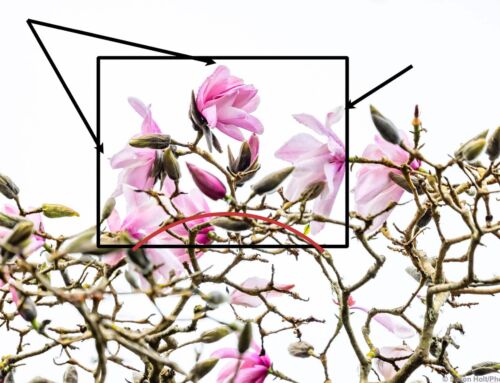An Orienpet Lily in full bloom is a wonder of nature, and will make a flower photographer out of anyone with a camera of any kind.
But don’t just grab the first photo that you see, think about the whole frame and not just the spectacular bloom itself. As I studied my first composition through the viewfinder of the camera I realized there was a faded Lily in the upper left and a bare stem at the bottom.
A nice enough photo but it caused me to keep looking. The camera gives you a good excuse to really study a flower and in this case I walked around the Lily and found a way to isolate a single flower against a patch of sky in the far distance.
The pollen encrusted anthers seemed to be dancing at the end of the filaments.
The more I looked the more I wondered how all that pollen came to swell up those anthers, and I suddenly realized the anthers first emerged from the flower as slender blades that crack open and fold back on themselves to reveal the pollen, making it ready to fall and fertilize the sticky stigma at the end of the pistil.
I locked the camera down on the tripod and waited and shot for about 60 minutes until one of the anthers was fully open and twisted itself sideways to dangle above the stigma. Watch.
Before and After Slider
The camera gives you a good excuse to really study of flower. Didn’t I just say that?
I’ll be giving a free talk at Annie’s Annuals on July 22 about photographing flowers. Many of the tips are taken from my e-book the PhotoBotanic Guide to Photographing Roses












Leave A Comment